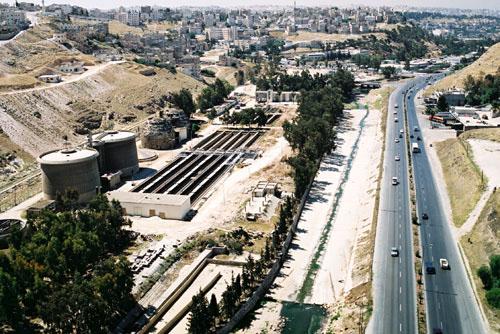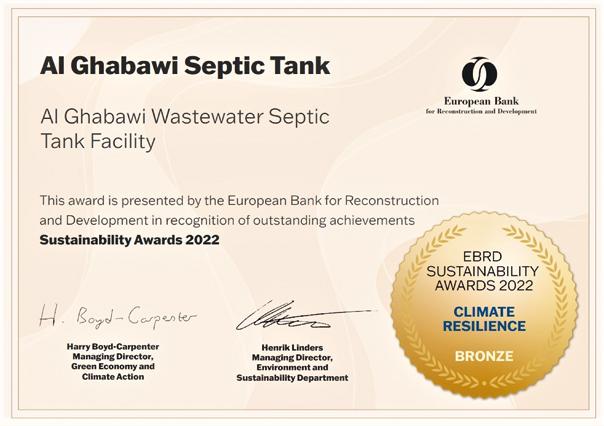You are here
Renovation of Ain Ghazal treatment plant completed
By Hana Namrouqa - Feb 04,2015 - Last updated at Feb 04,2015
AMMAN — With the renovation of the Ain Ghazal Wastewater Treatment Plant now complete, the Water Ministry has announced plans to relocate the facility within two to three years.
The renovation of the treatment plant, considered one of the capital’s health and environmental hotspots, aimed at ending the emission of bad odours, a long-standing nuisance to area residents.
In addition, it sought to address traffic congestion created by scores of wastewater tankers that line up to unload sewage at the plant, according to the ministry.
“The renovation is a short-term solution for the health and environmental problems the station used to create. However, the long-term solution is relocating the plant to an unpopulated area,” Water Ministry Spokesperson Omar Salameh said on Tuesday.
Noting that the ministry is still looking for a plot of land for the new wastewater treatment plant, Salameh underscored that the Ain Ghazal plant should be relocated within two to three years.
The authorities seek to relocate the facility, which is situated in a densely populated neighbourhood near the congested Amman-Zarqa highway, to a new site that is far away from residential areas, yet relatively close to the capital.
Located in east Amman, the Ain Ghazal plant was established in 1963 and comprises two wastewater treatment units — one receives and treats 150,000 cubic metres of wastewater from Amman’s wastewater network, and the second treats 10,000 cubic metres of wastewater daily, dumped by over 150 tankers, according to the ministry.
A local contractor hired by the ministry implemented the rehabilitation of the plant, which was completed on Monday, at a cost of JD2 million, funded by the Gulf Cooperation Council grant.
Under the renovation project, which started in August 2013, the ministry increased the number of sewage discharge points at the plant from eight to 14 and raised the capacity of the sewage tankers’ treatment unit from 10,000 cubic metres daily to 16,000 cubic metres, according to the ministry.
In addition, a new state-of-the-art treatment unit was established to prevent the emission of bad odours, a Water Ministry statement said, noting that the new unit will help create a clean environment for area residents and reduce the amount of organic materials that reach the Khirbet Samra Wastewater Treatment Plant via sewage tankers.
There are 27 treatment plants in the Kingdom that treat 122 million cubic metres of wastewater per year, 115 million cubic metres of which are used for industrial purposes and irrigating certain crops, such as fodder, according to the ministry.
Related Articles
Studies are under way to select a new location for the Ain Ghazal Wastewater Treatment Plant, Ministry of Water and Irrigation officials said on Thursday.
AMMAN — Expansion on the main wastewater treatment plant that serves Balqa Governorate's half-a-million residents will commence later this y
AMMAN — The Water Ministry on Saturday received the bronze European Bank for Reconstruction and Development’s (EBRD) 2022 Sustainability Awa


















